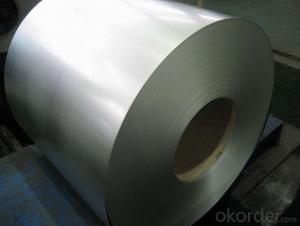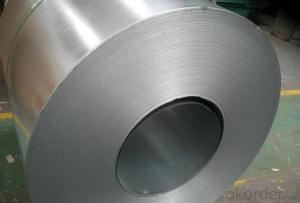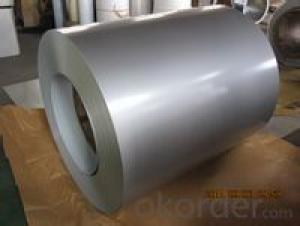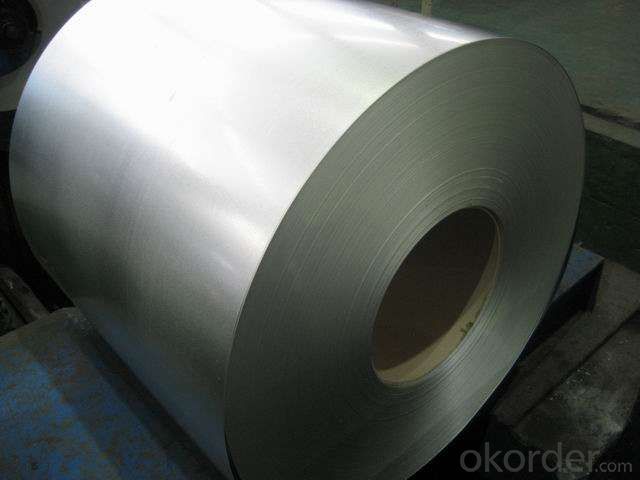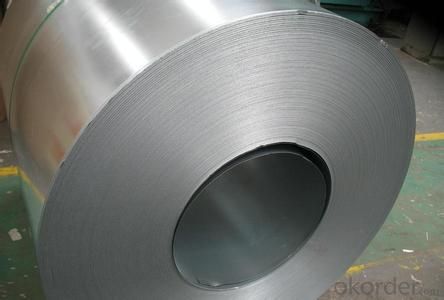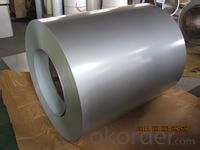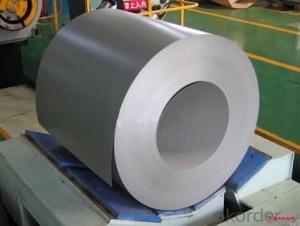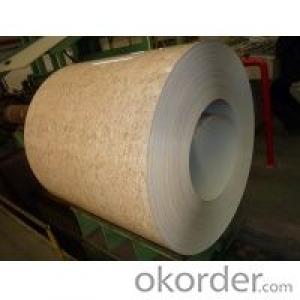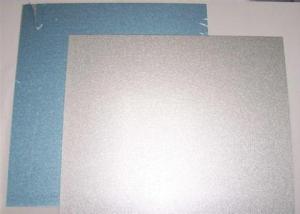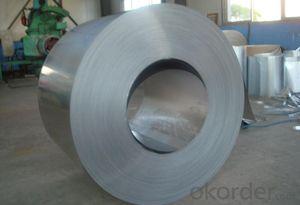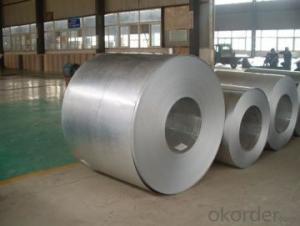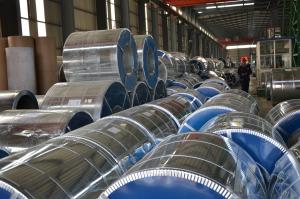Gavalume steel coil and sheet
- Loading Port:
- China Main Port
- Payment Terms:
- TT OR LC
- Min Order Qty:
- -
- Supply Capability:
- -
OKorder Service Pledge
OKorder Financial Service
You Might Also Like
Packaging & Delivery
| Packaging Detail: | seaworthy packing |
| Delivery Detail: | 10-30 days |
Specifications
galvalume steel coil AZ
55% Al, 43,5% Zn, 1,5% Si
1.Grade: G3312, SGLCC
2.Thickness: 0.20mm to 2.00mm
4.Delivery: 30 days
galvalume steel coil AZ
Thickness | 0.2mm-2.0mm |
Width | 914mm-1250mm |
Single weight | 1.0-6.0MT |
Coating | AZ 60-275g/m2 |
Steel grades | SGLCC SGLCD SGLCDD SGLC400-SGLC570;SZACC, SZACH, SZAC340R |
Standard | ASTM A792, JIS G3321 JIS G3317 |
Packing | Wrapped by plastic film and waterproof paper, and then fastened on wooden pallet.Or as you request. |
Usage | Used in building material, roof, profile,pipe making, furniture making, etc. |
Minimum quantity | 20MT |
Port of loading | Shang or Ningbo,China |
Delivery time | 5-20 days after we sign the contract. |
Payment terms | 30%T/T down payment,balance before shipment or irrevocable L/C at sight |
Supply ability | 20,000 MT per month |
- Q: How do steel coils contribute to the strength and durability of structures?
- Steel coils contribute to the strength and durability of structures by providing a high tensile strength and resistance to deformation. The coils are typically made from high-quality steel, which has excellent structural properties. When used in construction, steel coils can be shaped and formed into various structural components, such as beams, columns, and trusses. These components add strength and stability to the structure, making it more resistant to external forces, such as wind, earthquakes, and heavy loads. Additionally, steel coils are highly durable and can withstand harsh environmental conditions, including corrosion and extreme temperatures, ensuring the long-term integrity of the structure.
- Q: I have good quality knives that I sharpen with various things, but mostly with a fine, diamond encrusted dry stone (eze lap) . When I run them over the steel, it doesn't seem to make any difference. I've heard that it aligns the edge, whatever that means. Using a steel, is it all just for show ?
- A steel is only for keeping the edge sharp and straight. You must get your knife sharp first whether you use a stone or an electric knife sharpener. It also depends on where your knife is from as to what angle you need to sharpen it at. If you mess up the first part you can use a steel all day but it wont sharpen your knife.
- Q: I recently got in a car accident with a steel mailbox, on a snowy day. I was wondering if i can do anything since the steel mailbox caused my car to be totaled. Otherwise it would have been fine and would have suffered only minor damage. Anything I can do here to maybe get some money back? Thanks!
- This will be a collision claim for you, if you have collision you can file a claim and you'll have to pay a deductible, whatever it is. The owner of the mailbox can also file a claim on your insurance since you damaged his/her mailbox. If you don't have collision coverage you won't get squat - this accident is 100% your fault. The steel mailbox didn't cause your car to get totaled, your driving did.
- Q: How are steel coils affected by global trade policies?
- Steel coils can be significantly affected by global trade policies. The imposition of tariffs or trade restrictions on steel imports can impact the availability and cost of steel coils in the international market. These policies can lead to increased prices, limited supply, and disrupted trade flows, ultimately affecting the steel coil industry worldwide. Conversely, the removal or reduction of trade barriers can foster a more open and competitive market, allowing for easier access to steel coils and potentially benefiting industries reliant on this material.
- Q: This is my first time buying new strings for my violin and I’ve narrowed it down to two choice based on reviews and cost. The only difference I can see between the strings is that one has a solid steel core and the other has a synthetic core. What are the pros and cons of each type of core?
- It depends on the tone you want. Synthetics are a more artificial, but rich tone. Solid steel strings will have a beautiful and bright tone, but may be a tad bit more difficult to play.
- Q: What are the factors affecting the price of steel coils?
- There are several factors that can affect the price of steel coils. These include the cost of raw materials used in the production of steel, such as iron ore and coal. Additionally, the global supply and demand for steel can also impact prices. Other factors can include currency exchange rates, trade policies, transportation costs, and market competition. Overall, the price of steel coils is influenced by a combination of economic, environmental, and geopolitical factors.
- Q: Can steel coils be coated with anti-fingerprint materials?
- Yes, steel coils can be coated with anti-fingerprint materials. These coatings are designed to minimize fingerprint smudging and make the surface easier to clean, improving the appearance and functionality of the steel coils.
- Q: How are steel coils processed for heat treatment?
- Steel coils are typically processed for heat treatment by first being uncoiled and then cleaned to remove any dirt or scale. The coils are then heated to a specific temperature, which is determined based on the desired properties of the steel. This temperature is maintained for a specific period of time to allow for the desired transformation of the steel's microstructure. After the heat treatment process is complete, the coils are cooled either slowly or rapidly, depending on the desired properties. This allows the steel to be hardened or softened as required. Finally, the coils are recoiled and prepared for further processing or shipment.
- Q: How are steel coils inspected for thickness variations?
- Steel coils are inspected for thickness variations using non-contact measurement techniques such as laser or ultrasonic sensors. These sensors are capable of accurately detecting and measuring the thickness of the steel coils at various points along their length. The collected data is then analyzed to identify any variations in thickness and ensure the quality and consistency of the steel coils.
- Q: How are steel coils used in appliances?
- Steel coils are commonly used in appliances for their strength, durability, and heat conductivity. They are primarily utilized in appliances like refrigerators, air conditioners, and ovens to provide efficient cooling and heating functions. The steel coils act as heat exchangers, transferring thermal energy from one area to another, enabling appliances to control and maintain desired temperatures effectively.
Send your message to us
Gavalume steel coil and sheet
- Loading Port:
- China Main Port
- Payment Terms:
- TT OR LC
- Min Order Qty:
- -
- Supply Capability:
- -
OKorder Service Pledge
OKorder Financial Service
Similar products
Hot products
Hot Searches
Related keywords
